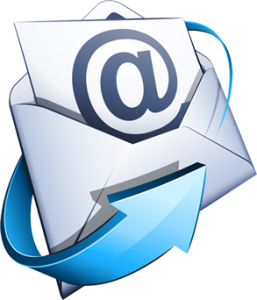Email Etiquette Series – Email DOs and Don’ts
“Rudeness is the weak man’s imitation of strength” – Eric Hoffer (1902 – 1983)”
Whether it’s for personal or business use, understanding and exercising the basics of email standards 
can help avoid a lot of potential misunderstandings and can help us all communicate online a little better. This article serves as a general best-practices guide for operating an email account in today’s online world.
Email Etiquette
– Choose your main email address wisely: It will determine (in part), how you’re perceived.
– Use and update your Antivirus software: Make sure all your security software is up to date to avoid spreading spam and malware unknowingly.
– Set up/correct your system clock: To make sure your message aren’t sent from 1976.
– Update your email password regularly: You’d be surprised at how many email accounts have been unknowingly compromised over long periods of time simply because of static passwords. Reset your password every 1-2 months if possible.
– If you’re emotionally charged up/upset at the time of typing the email, perhaps take a break from the screen, walk away and reflect first before you type and send.
– Acronyms: Take into consideration that the recipient may not know every emoticon and acronym under the sun.
– Structure your emails in a readable way; bad grammar and improper sentence structure gives the impression of poor education and will spark concern about being taken seriously.
– Don’t use ALL CAPS or TYPe LiKe THiS. Typing in caps gives the impression of screaming/shouting and mixed-case typing is annoying and not cool.
– Signatures: This may be the last of your worries; but signatures affect the tone of every email you write. Make them as short as possible. Don’t use images and social networking icons (despite how cool you think they are); you’ll likely have problems with different mail clients. See Smashing Magazine’s excellent guide on The Art and Science of the Email Signature.
– Review before sending: Always take another quick look at the content and who you’re sending to before hitting the almighty send button.
– Keep emails short and to-the-point: don’t intimidate readers with huge blocks of text.
– Use short and to-the-point email subjects: Put some consideration into the Email Subject, never use vague titles or “Hi”, Hello” etc as they’ll likely end up in the recipients trash/spam folder.
– Don’t use bold or red text to emphasise your email’s tone: doing so can (and probably will) cause ambiguity, misunderstanding and general annoyance on the recipients end.
– Let people know their email has been received. If someone went to the trouble of writing you a lengthy message and you can’t get back to them right away, let them know.
– Always check your trash/spam folder first before getting upset about someone not responding to your email.
– Plain text v. HTML: If you’re unsure, send emails in plain text rather than rich HTML – not everyone can see your prettily formatted emails the same way you do.
– Autoresponders / Out-of-office replies: If your customers and/or contacts rely on your quick response, make sure you let them know before you switch on your autoresponders. Also don’t forget to add yourself a reminder to switch it off when you get back.
Privacy, Copyright
– Regardless of what is right and wrong; emails get stored and unknowingly forwarded all the time – take extra care in what you write and always keep this in mind.
– As above, forwarding a private email is copyright infringement, a breach of privacy and outright rude – always check with the author first!
– DO NOT list all your contacts in the To: or Cc: field. What gives you the right to expose your contacts addresses to strangers?
– If you’re forwarding to multiple people, use the Bcc: field – this will protect their email from being shown to other recipients they don’t know – privacy first, always!
– If a friend puts your e-mail address in the To: field with others you do not know, ask him/her to stop exposing your address to strangers without your permission.
Forwarding
– Don’t forward random stuff unless you’re 100% sure the recipient is interested in the content.
– Don’t forward without first editing out all the forwarding information – this means email addresses (especially), headers and commentary from other forwarders.
– Political/controversial issues: Be careful here; the recipient may not appreciate/agree with your point of view.
– Reply To All: Never use this unless you’re 100% sure all recipients are interested in the dialogue.
– Include a courteous greeting and closing; a few injections of “thanks” and “please” can go a long way.
– Configure your email client to show your From: field. First Name, Last Name; both properly capitalized. Not in all lower case; not in all caps. This will help to make sure your emails look legitimate instead of being misidentified as spam.
– Ensure the Subject: field is clear and readable and reflects the point of the email.
Attachments
– Never send emails with unannounced large attachments without first getting approval from the recipient. Especially in the mobile computing age… Imagine receiving an email with a 10MB+ attachment on your mobile phone with pay-per-MB 3/4G usage.
– If possible, use file-sharing software such as Dropbox or Box for big files/attachments.
– Resize your images: If you’re attaching images; resize them to about 600px (pixels) – this will greatly reduce download time. If you don’t have an image editor, use online resizing/resampling services such asresize2email
– If you’re sending files created by 3rd party software (Photoshop, Illustrator, Excel); make sure the recipient has compatible software to open them first. PDFs are industry standard now; so use them when possible. See this infographic if you’re not convinced yet.
– When sending large attachments, zip them first! I would consider a “large” email anything over 5mb. For a guide on compressing your files, see this page.

